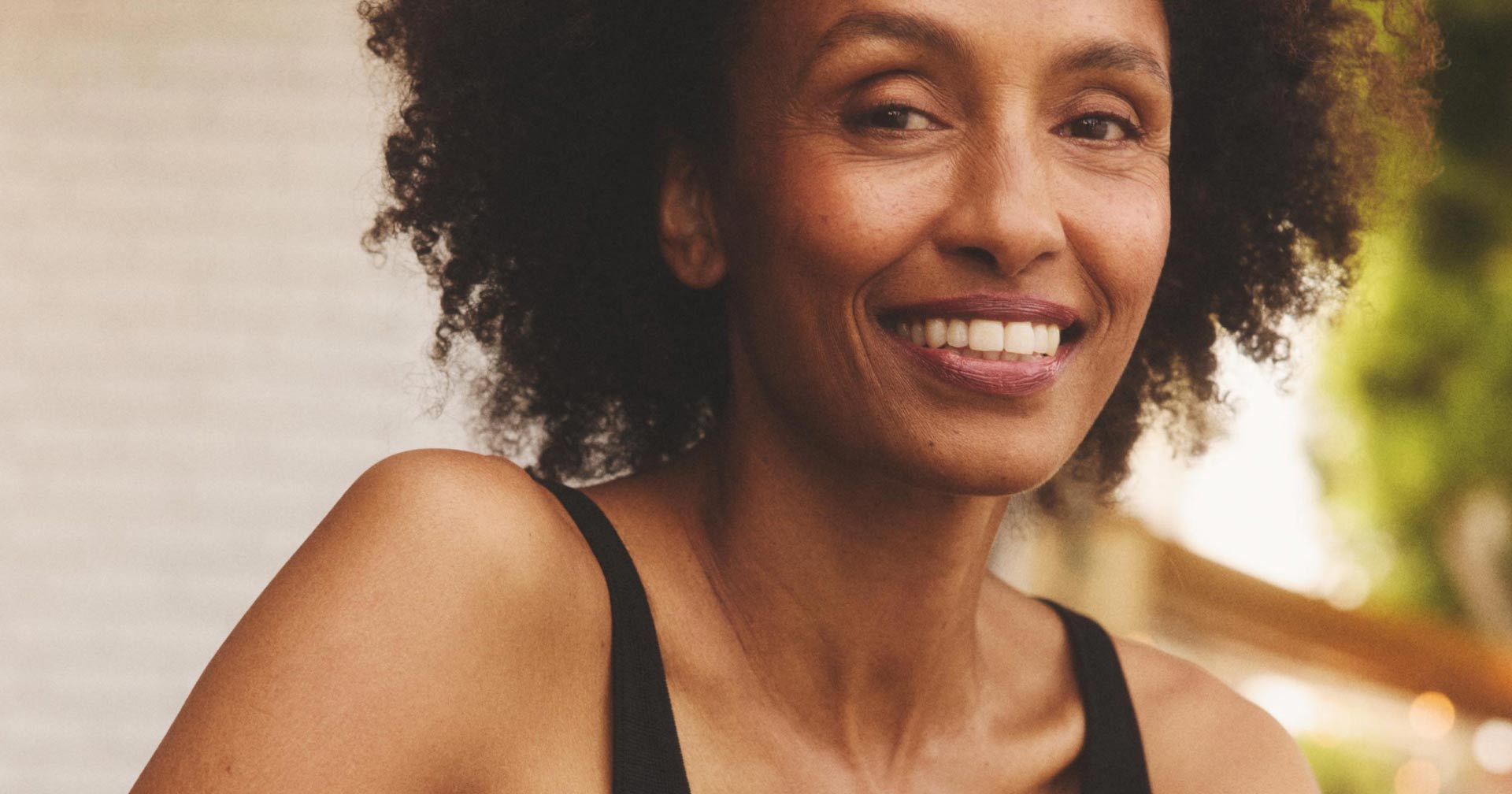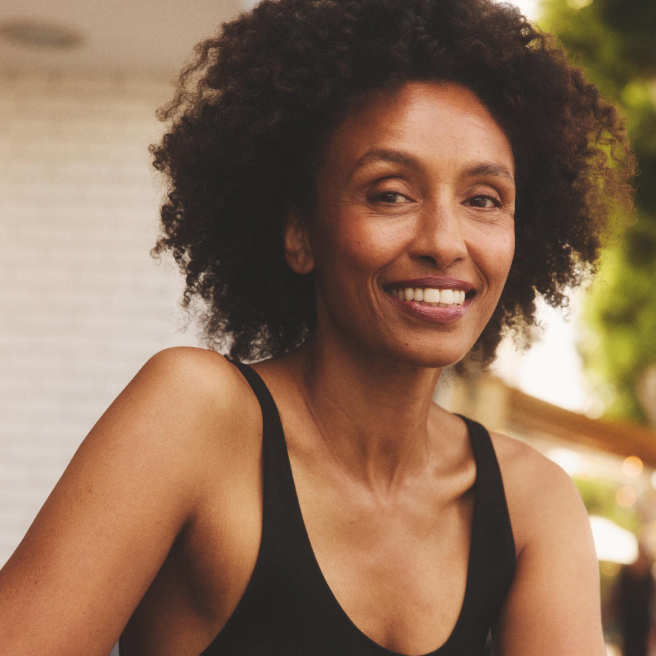Exercise Tips for Women in Midlife with Antonietta Vicaro, Chief Training Officer at Pvolve




Comprehensive care is about so much more than medicine. Crucially, women also need an equal balance of strength, mind and body. That's why we've partnered with Pvolve, the clinically backed functional fitness method, and its Chief Training Officer, Antonietta Vicario. Together, we're sharing 10 exercise tips and tricks designed to strengthen midlife health for women, helping them set their bodies up for longer, happier, and more fulfilling lives.
Comprehensive care is about so much more than medicine. Crucially, women also need an equal balance of strength, mind and body. That's why we've partnered with Pvolve, the clinically backed functional fitness method, and its Chief Training Officer, Antonietta Vicario. Together, we're sharing 10 exercise tips and tricks designed to strengthen midlife health for women, helping them set their bodies up for longer, happier, and more fulfilling lives.
I've dedicated my career to supporting women at every stage of life. And in my 20+ years as an OB/GYN I can confirm that entering perimenopause and menopause isn't about loss; it's the beginning of a new phase of freedom, joy, and vibrancy. At Hers, we believe in providing access to comprehensive treatment alongside holistic, whole-body care. Last month, we introduced access to a new line of treatment plans to help women in midlife find relief from disruptive symptoms—restoring their confidence, energy, sex life, and vitality.
But comprehensive care is about so much more than medicine. Crucially, women also need an equal balance of strength, mind and body. That's why we've partnered with Pvolve, the clinically backed functional fitness method, and its Chief Training Officer, Antonietta Vicario. Together, we're sharing 10 exercise tips and tricks designed to strengthen midlife health for women, helping them set their bodies up for longer, happier, and more fulfilling lives.

1. Choose enjoyable, effective workouts you'll stick with. Movement is such a critical component of our long-term health, especially in perimenopause and menopause. While exercise overall is always beneficial, it’s important to focus on the right kind of exercises in this transition, which often means adapting your routine to include strength and SIT style training, also known as Sprint Interval Training. Cardiovascular activity, particularly short high-intensity interval style training like SIT, helps with overall heart health as well as providing good stimulus to our bones so they maintain their density, and prioritizing strength training helps to maintain metabolically active muscle, increases our energy, helps with mood and sleep, and supports our bone density.
2. Focus on strength training and short high-intensity intervals, and incorporate weights. The single most important type of exercise a woman should prioritize in menopause and beyond is strength training. For bone and heart health, we recommend short high-intensity intervals to stimulate your heart muscle followed by periods of rest and recovery. And remember: it’s not just about weight training with heavy loads. A strong, resilient body is one that can move daily, so start small and focus on building a mind-body connection: the foundation for good form before adding progressive weights.
3. Thirty minutes of exercise a day, a few times a week makes all the difference. Menopause requires us to develop a new relationship with our changing body. During this life stage, finding time to exercise can be a challenge. Even just 30 minutes of the right exercise a few times a week is enough to boost energy, help maintain muscle, and leave you feeling strong and confident.
4. Rest and restoration is key for hormone health. Techniques such as meditation, stretching, and using recovery tools (like foam rollers or massage balls) are effective for improving sleep, managing stress, reducing hot flashes and inflammation, and promoting an overall sense of ease and contentment.
5. Modify workouts as you need to stay safe as your body changes. Often in this phase, impact heavy workouts like HIIT (High Intensity Interval Training) or repetitive cardio like running or cycling don’t serve the body's changing needs. Make no mistake: if you love running, it’s great for the heart, but it won’t build critical muscle mass like strength training. Focus on adding mobility into your weight training to keep your joints supple and healthy.
6. Incorporate protein and fiber into your diet. Protein helps maintain muscle mass, which declines with the drop in estrogen, and also helps stabilize energy levels. Fiber helps maintain a healthy weight and can help regulate blood sugar levels, which is beneficial for supporting cardiovascular health.
7. Find ways to fill your cup. We are only as energized as the balance we create for ourselves and a lot of that is about setting boundaries. If you are giving to everyone else but yourself, you won’t be able to feel your best.
8. Community is everything. Connect with people who light you up. Given that other women are likely facing similar midlife experiences, prioritize being open and honest to build a strong, supportive community.
9. Utilize a digital health platform like Hers to help navigate this stage of life. Through Hers, women can find access to the intimacy of individualized, holistic care without the traditional hurdles, delivered by real providers, supplied by licensed pharmacies, and with consistent, 24/7 support. The Hers app is full of expert-developed tools and techniques across psychology, nutrition, exercise, sleep, and more, to set women up for success.
10. Start small and know that over time, you will create an amazing habit. Enjoyment drives habits. Find a workout you genuinely like, and it will resonate. Don't wait for a huge block of time; you can start small with just 20 minutes and gradually build your routine from there.
A well rounded approach to midlife care will help make your experience more enjoyable and set you on a path to thrive in this new era. You can find more perimenopause and menopause resources and health, wellness, and fitness tips in the menopause Education Hub.